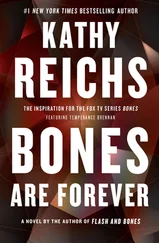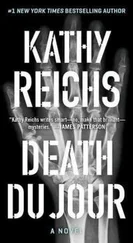Reichs, Kathy - Death Du Jour
Здесь есть возможность читать онлайн «Reichs, Kathy - Death Du Jour» весь текст электронной книги совершенно бесплатно (целиком полную версию без сокращений). В некоторых случаях можно слушать аудио, скачать через торрент в формате fb2 и присутствует краткое содержание. Жанр: Старинная литература, на английском языке. Описание произведения, (предисловие) а так же отзывы посетителей доступны на портале библиотеки ЛибКат.
- Название:Death Du Jour
- Автор:
- Жанр:
- Год:неизвестен
- ISBN:нет данных
- Рейтинг книги:3 / 5. Голосов: 1
-
Избранное:Добавить в избранное
- Отзывы:
-
Ваша оценка:
- 60
- 1
- 2
- 3
- 4
- 5
Death Du Jour: краткое содержание, описание и аннотация
Предлагаем к чтению аннотацию, описание, краткое содержание или предисловие (зависит от того, что написал сам автор книги «Death Du Jour»). Если вы не нашли необходимую информацию о книге — напишите в комментариях, мы постараемся отыскать её.
Death Du Jour — читать онлайн бесплатно полную книгу (весь текст) целиком
Ниже представлен текст книги, разбитый по страницам. Система сохранения места последней прочитанной страницы, позволяет с удобством читать онлайн бесплатно книгу «Death Du Jour», без необходимости каждый раз заново искать на чём Вы остановились. Поставьте закладку, и сможете в любой момент перейти на страницу, на которой закончили чтение.
Интервал:
Закладка:
Pelletiér wanted me to look at the baby for evidence of starvation. That would require microscopy. Thin sections of bone would have to be ground down, stained, and placed on slides so I could examine the cells under magnification. While high turnover of bone is typical of infants, I’d look for signs of unusual porosity and abnormal remodeling in the microanatomy.
Samples had been sent to the histology lab. I’d also study the X-rays and the skeleton, but that was still soaking to remove the putrefied flesh. A baby’s bones are too fragile to risk boiling.
So. Nothing urgent. I could open Élisabeth Nicolet’s coffin.
After a refrigerated sandwich and a yogurt in the cafeteria, I rode down to the morgue, asked to have the remains brought to room three, then went to change.
The coffin was smaller than I remembered, measuring less than three feet in length. The left side had rotted, allowing the top to collapse inward. I brushed off loose soil and took photos.
“Need a crowbar?” Lisa stood in the doorway.
Since this was not an LML case, I was to work alone, but I was getting a lot of offers. Apparently I was not the only one fascinated by Élisabeth.
“Please.”
It took less than a minute to remove the cover. The wood was soft and crumbly, and the nails gave easily. I scooped dirt from the interior to reveal a lead liner containing another wood coffin.
“Why are they so little?” asked Lisa.
“This isn’t the original casket. Élisabeth Nicolet was exhumed and reburied around the turn of the century, so they just needed enough space for her bones.”
“Think it’s her?”
I drilled a look at her.
“Let me know if you need anything.”
I continued scooping dirt until I had cleared the lid of the inner casket. It bore no plaque, but was more ornate than the outer, with an elaborately carved border paralleling the hexagonal outside edge. Like the exterior coffin, the one inside had collapsed and filled with dirt.
Lisa returned in twenty minutes.
“I’m free for a while if you need X-rays.”
“Can’t do it because of the lead liner,” I said. “But I’m ready to open the inner casket.”
“No problem.”
Again the wood was soft and the nails slipped right out.
More dirt. I’d removed only two handfuls when I spotted the skull. Yes! Someone was home!
Slowly, the skeleton emerged. The bones were not in anatomical order, but lay parallel to one another, as though tightly bound when placed into the coffin. The arrangement reminded me of archaeological sites I’d excavated early in my career. Before Columbus, some aboriginal groups exposed their dead on scaffolds until the bones were clean, then bundled them for burial. Élisabeth had been packed like this.
I’d loved archaeology. Still did. I regretted doing so little of it, but over the past decade my career had taken a different path. Teaching and forensic casework now occupied all my time. Élisabeth Nicolet was allowing me a brief return to my roots, and I was enjoying the hell out of it.
I removed and arranged the bones, just as I had the day before. They were dry and fragile, but this person was in much better shape than yesterday’s lady from St-Jovite.
My skeletal inventory indicated that only a metatarsal and six phalanges were missing. They did not show up when I screened the soil, but I did locate several incisors and a canine, and replaced them in their sockets.
I followed my regular procedure, filling out a form just as I would for a coroner case. I started with the pelvis. The bones were those of a female. No doubt there. Her pubic symphyses suggested an age of thirty-five to forty-five years. The good sisters would be happy.
In taking long-bone measurements I noted an unusual flattening on the front of the tibia, just below the knee. I checked the metatarsals. They showed arthritis where the toes join the feet. Yahoo! Repeated patterns of movement leave their marks on the skeleton. Élisabeth was supposed to have spent years in prayer on the stone floor of her convent cell. In kneeling, the combination of pressure on the knees and hyperflexion of the toes creates exactly the pattern I was seeing.
I remembered something I’d noticed as I removed a tooth from the screen, and picked up the jaw. Each of the lower central incisors had a small but noticeable groove on the biting edge. I found the uppers. Same grooves. When not praying or writing letters, Élisabeth sewed. Her embroidery still hung in the convent at Lac Memphrémagog. Her teeth were notched from years of pulling thread or holding a needle between them. I was loving this.
Then I turned the skull faceup and did a double take. I was standing there, staring at it, when LaManche entered the room.
“So, is this the saint?” he asked.
He came up beside me and looked at the skull.
“ Mon Dieu. ”
“Yes, the analysis is going well.” I was in my office, speaking with Father Ménard. The skull from Memphrémagog sat in a cork ring on my worktable. “The bones are remarkably well preserved.”
“Will you be able to confirm that it’s Élisabeth? Élisabeth Nicolet?”
“Father, I wanted to ask you a few more questions.”
“Is there a problem?”
Yes. There may be.
“No, no. I’d just like a little more information.”
“Yes?”
“Do you have any official document stating who Élisabeth’s parents were?”
“Her father was Alain Nicolet, and her mother was Eugénie Bélanger, a well-known singer at that time. Her uncle, Louis-Philippe Bélanger, was a city councilman and a very distinguished physician.”
“Yes. Is there a birth certificate?”
He was silent. Then,
“We have not been able to locate a birth certificate.”
“Do you know where Élisabeth was born?”
“I think she was born in Montreal. Her family was here for generations. Élisabeth is a descendant of Michel Bélanger, who came to Canada in 1758, in the last days of New France. The Bélanger family was always prominent in city affairs.”
“Yes. Is there a hospital record, or a baptismal certificate, or anything that officially records her birth?”
More silence.
“She was born more than a century and a half ago.”
“Were records kept?”
“Yes. Sister Julienne has searched. But things can be lost over such a long time. Such a long time.”
“Of course.”
For a moment we were both silent. I was about to thank him when,
“Why are you asking these questions, Dr. Brennan?”
I hesitated. Not yet. I could be wrong. I could be right but it meant nothing.
“I just wanted a bit more background.”
I’d hardly replaced the receiver when the phone rang.
“ Oui , Dr. Brennan.”
“Ryan.” I could hear tension in his voice. “It was arson all right. And whoever planned it made sure the place went up. Simple but effective. They hooked a heat coil to a timer, same kind you use to turn on your lamps when you go off to the spa.”
“I don’t go to spas, Ryan.”
“Do you want to hear this?”
I didn’t answer.
“The timer turned on the hot plate. That set off a fire which ignited a propane tank. Most of the timers were destroyed, but we recovered a few. Looks like they were set to go off at intervals, but once the fire spread it was bombs away.”
“How many tanks?”
“Fourteen. We found one undamaged timer out in the yard. Must have been a dud. It’s the kind you can buy in any hardware store. We’ll try for prints, but it’s a long shot.”
“The accelerant?”
“Gasoline, as I suspected.”
“Why both?”
“Because someone friggin’ wanted the place destroyed big time and didn’t want a screw-up. Probably figured there wouldn’t be a second chance.”
Читать дальшеИнтервал:
Закладка:
Похожие книги на «Death Du Jour»
Представляем Вашему вниманию похожие книги на «Death Du Jour» списком для выбора. Мы отобрали схожую по названию и смыслу литературу в надежде предоставить читателям больше вариантов отыскать новые, интересные, ещё непрочитанные произведения.
Обсуждение, отзывы о книге «Death Du Jour» и просто собственные мнения читателей. Оставьте ваши комментарии, напишите, что Вы думаете о произведении, его смысле или главных героях. Укажите что конкретно понравилось, а что нет, и почему Вы так считаете.






